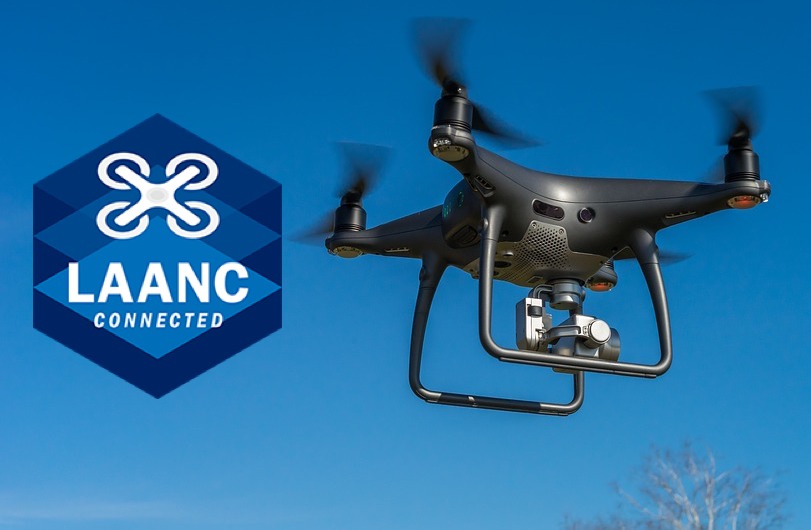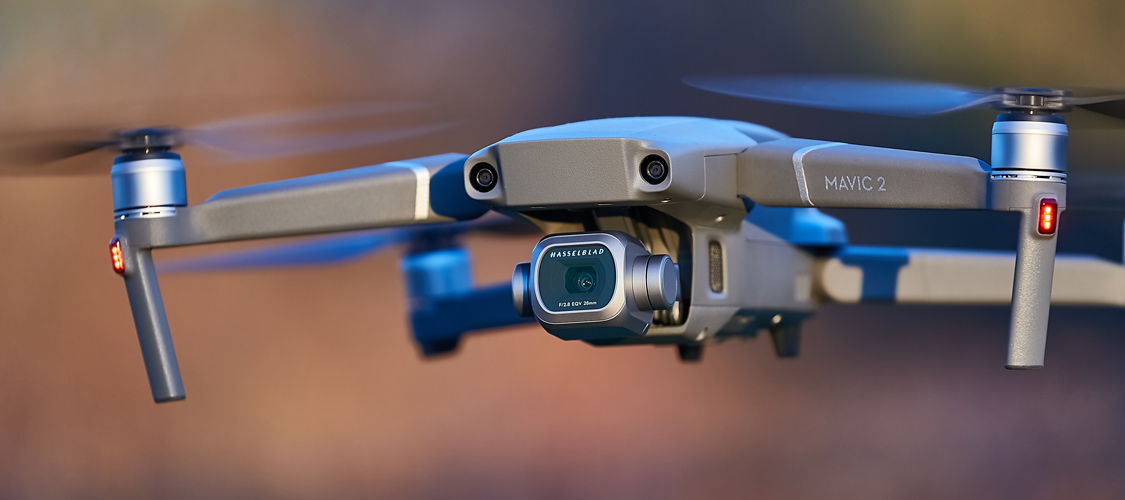-
What are NOTAMs?
-
What does a NOTAM look like, and how is it interpreted?
-
How is a DROTAM any different?
-
When are NOTAMs issued?
- 1. Regular FAA publication
- 2. As-needed NOTAMs
-
Why should you check for NOTAMs?
- 1. You may have to change your flight plans
- 2. Airspace restrictions can change
- 3. Gives you practice in reading them
- 4. Enhances awareness of your surroundings
-
How to check for NOTAMs or DROTAMs
- 1. Via the official FAA site
- 2. SkyVector
- 3. ForeFlight
-
How to file your own NOTAM
-
Final thoughts
Nowadays, there are enough drones owned and operated in the US to consider them as a significant component of the national airspace. The thing about the national airspace is that it’s a shared commodity, making it necessary for airmen to be constantly communicating with each other to avoid close encounters. One system for sharing vital information is through NOTAMs, or public advisories shared through the FAA.
What is the value of NOTAMs to drone pilots? Should drone pilots be always checking NOTAMs? Can a NOTAM also be issued by a drone pilot?
What are NOTAMs?
NOTAM stands for “Notice to Airmen” and are informational advisories that have been an established system since the 1940s. NOTAMs are filed with the FAA, who are then responsible for releasing it to the general public. The practice of filing and releasing NOTAMs was started primarily to provide airmen with information that may affect the safety of their flight activities. Typical reasons for filing a NOTAM include airshows, military flight exercises, parachute jumps, movement of any VIP, or temporary obstacles.
The NOTAM is an internationally recognized system, although the specifics of how they are used may vary from one country to another. For instance, NOTAMs in the UK are simply classified as either Warning (done to inform pilots of any nearby event) or Avoid (done to restrict pilots from flying in the area). In the US, a NOTAM is a bit more complex. The FAA implements five classifications for NOTAMs:
- Military – A military NOTAM is issued for military activities in national airspace
- Distance – A distance NOTAM is distributed beyond the area of flight service in an airport in case of changes in airport usability
- Special Activity Airspace – A special activity airspace (SAA) NOTAM is issued when a specific area will be active outside of normal published times
- Pointer – A pointer NOTAM is simply one that points to another NOTAM. These are issued to emphasize particularly important or critical NOTAMs.
- Flight Data Center – A Flight Data Center NOTAM is issued to release information on conditions that require strict compliance. These include safety hazards and temporary flight restrictions (TFR), which may be due to temporary airspace closure.
What does a NOTAM look like, and how is it interpreted?
Aside from having several types of NOTAMs, another factor that makes NOTAMs quite complex is the fact that they are sent out in a highly abbreviated form. To best demonstrate this, let’s look at the following sample NOTAM:
!IKK 02/098 ZAU OBST WIND TURBINE FARM WITHIN AREA DEFINED AS 2.5NM RADIUS OF 414105N0890743W (9.8NM NE C82) 1424FT (264FT AGL) NOT LGTD 1502051656-1512312359EST
Here’s a short summary of what the NOTAM says: This NOTAM was issued from the Kankakee Flight Service and Chicago Center in Illinois in February and is the 98th NOTAM issued under the accountability of this air traffic facility. It was issued to warn drone pilots of an obstacle, specifically a wind turbine farm. The distance radius of the obstacle is 2.5 nautical miles, and it is centered on the coordinate 414105N 890743 W. The obstacle (or group of obstacles) has a maximum height of 264 feet above ground level. The obstacles are not lighted. This NOTAM is valid from February 5, 2015, to December 31, 2015.
That’s a lot of information derived from just two lines of text. The FAA considers the ability to interpret NOTAMs as one of the essential skills for a commercial drone pilot; thus it’s inclusion in the Part 107 knowledge test. Manually decoding each element of a NOTAM takes a lot of practice, and you’ll always want to have a reference guide handy with you.
Fortunately, there are now a few online tools that you can use to decode NOTAMs effortlessly. The best one we’ve stumbled upon is this Free NOTAM Decoder provided by Dror Flight Training, a flight school based in Israel. If you have an iPhone, then you can also try this NOTAM Decoder app. Neither of these tools is perfect as there is simply too much variability in how NOTAMs are expressed and relayed. However, the interpretations they provide should already be a good starting point for you.
How is a DROTAM any different?
DROTAMs are a relatively new thing that simply means “drone NOTAMs.” These are NOTAMs issued by drone pilots under special conditions, such as when they are operating inside controlled airspace or beyond the altitude ceiling of any given airspace. A DROTAM typically contains less detail than a standard NOTAM – only the date and time covered, the area of the flight, and the altitude range are provided.
Some sites may refer to DROTAMs by their alternate name – sUAS NOTAMs. The Flight Service website even throws out the NOTAM moniker completely and refers to drone-related advisories as UAS Operating Area (UOA). All these terms are used interchangeably, so make sure that you don’t get confused.
When are NOTAMs issued?
Aside from understanding what a NOTAM means, drone pilots also need to identify those that contain time-sensitive information. Depending on the NOTAM, they can remain valid for almost a month or can warn you about events that will happen in just a few days.
1. Regular FAA publication
The FAA releases a NOTAMS publication every 28 days, which summarizes NOTAMS that will remain valid for the next 28 days. These NOTAMs have been filed weeks in advance and are separated by state in the publication to make it easier to find the ones that are relevant to you. All NOTAM publications can be accessed at the FAA website. Drone pilots may benefit from developing the habit of checking NOTAM publications regularly.
2. As-needed NOTAMs
More time-sensitive NOTAMs are issued by the FAA on an as-needed basis. These are typically issued for circumstances that require strict compliance. Even though they are time-sensitive, these NOTAMs are still released a few days in advance, giving you just enough time to revise your flight plans if necessary.
Why should you check for NOTAMs?
The practice of checking for NOTAMs regularly, and especially right before a drone flight mission, isn’t something that has been fully embraced by the drone community. Some drone pilots believe that it’s an unnecessary measure because of the relatively small hazard that drones pose. However, we don’t subscribe to that belief. Here are a few good reasons for why you should make checking for NOTAMs a regular practice:
1. You may have to change your flight plans
The number one reason to check for NOTAMs before you fly is that your flight plans might end up in direct conflict with some newly established or temporary flight restriction. Without checking NOTAMs, you might not be aware that the area you’re flying in is due for a parachute jump or an airshow. This could be especially disastrous if you’re flying your drone commercially, as it means that you’ll have to pull out without completing the job.
2. Airspace restrictions can change
Drone pilots who fly in the same area repeatedly may fall into a trap of complacency. However, this is unacceptable because of how dynamic the national airspace is. That area where you could be flying normally without problems might be restricted for just one day because a VIP will be passing there. Keep in mind that ignorance cannot be used as an excuse if you violate airspace restrictions, especially when the presence of your drone unwittingly becomes an issue of national security.
3. Gives you practice in reading them
Even if you don’t end up having to change your plans because of NOTAMs, it’s still worth your time to give the NOTAMs a scan and try to deduce what they mean. This is the most effective way for you to learn how to interpret them without having to look up a reference. Reading NOTAMs quickly is a rare skill in the drone community because of the number of drone pilots that disregard them. You never know when this advantage could come in handy.
4. Enhances awareness of your surroundings
Checking NOTAMs before you fly does give you added work, and some may deem it unnecessary. However, aside from the small amount of time and effort that you’ll spend, there is literally no downside to checking NOTAMs anyway. Any information that could enhance your awareness of your surroundings should be beneficial. Even if the only relevant advisory you could get is a DROTAM for a drone that’s flying nearby, you can still fly your drone in a much safer manner knowing that you’re sharing the airspace with another drone.
How to check for NOTAMs or DROTAMs
The FAA publishes millions of NOTAMs every year, and having to find the ones that are relevant to you might seem overwhelming. This won’t be the case if you know where to look. To make things easier, here are our recommended ways to check for NOTAMs:
1. Via the official FAA site
One of the best ways to get NOTAMs is, of course, to go straight to the source. The official Federal NOTAM System allows you to search via location, airport, or air traffic facility. If you can’t find a nearby air traffic facility for your planned location, then you can also specify it via latitude and longitude numbers.
One of the niftier features of the site is the ability to set take-off and landing destinations, after which the site will prescribe a path that avoids any no-fly zones. It’s not very useful for drone pilots, but it’s a fun feature to play around with.
The biggest drawback of getting your NOTAMs from the official FAA site is that you get them in their raw and abbreviated forms. If you can’t read NOTAMs without having to look at a reference, then you might end up spending a lot of time interpreting each one. There’ s also the risk of you interpreting them wrongly. If you want to learn how to read NOTAMs, though, then this is the site to go to.
2. SkyVector
SkyVector is an online flight planning platform that provides information on NOTAMs, TFR, airspace classes, and no-fly zones. All of this information is conveniently summarized in their fully navigable and interactive map. You can simply click on any NOTAM on the map to view the pertinent details, such as the covered time and date, altitude range, and any TFR conditions.
SkyVector is one of the new online platforms that maintains a database of DROTAMs. If you just want to see DROTAMs in the interactive map, then you can easily set the filter to the appropriate settings. The filter option is also a very useful feature of SkyVector that allows you to easily make sense of all the available information.
Although SkyVector provides a quick summary of what each NOTAM says, the actual interpretation is still not immediately visible. Thus, you might on some critical details if you merely rely on the NOTAM summaries. The good thing about SkyVector is that it’s free to use, so you can just look it up online as a means to augment your other flight planning methods.
3. ForeFlight
There’s one thing that gives ForeFlight the edge over the two previous entries: it’s a mobile app. It’s also a pretty well-designed app with an intuitive interface that lets you sort through NOTAMs easily. Better yet, all NOTAMs will be translated to English, and all relevant times are automatically converted to local time.
ForeFlight isn’t just a NOTAM app – it’s a complete flight planning platform conveniently accessible through your mobile device. It has sectional charts, real-time weather maps, and a digital logbook. The one drawback is that you’ll need to pay a $99.99 yearly subscription to use ForeFlight. Right now, the app is also only available for Apple products.
ForeFlight is one of the more comprehensive, yet convenient, mobile apps for drone pilots. The subscription plan is well worth it, especially if you are flying drones commercially.
How to file your own NOTAM
Under certain circumstances, drone pilots are required to file their own DROTAMs before they can operate. Even without such a requirement, there’s nothing restricting drone pilots from filing a DROTAM with the FAA. The process is very quick and easy.
First, you’ll have to sign up for an account at the Flight Service website if you don’t have one yet. Flight-Service is an all-around portal for flight planning that started as a service that pilots had to contact by phone to receive relevant airspace information. Nowadays, all of their services have been migrated to the online platform.
Once you have logged in to your account, look for the UAS tab at the upper-right section of the page and go into the Planning section. This should bring you to an online form that you’ll need to fill out. The header for the form is UAS Operatinag Area (UOA), which is how Flight Service refers to any drone-related NOTAMs.
All the information that you provide in this form will show up on the corresponding advisory related to your NOTAM. If you are unsure about how to answer any of the fields, simply hover your mouse over the field title to see more information.
Basically, you’ll need to provide details about your planned operations, the drone you are using (including its serial number), the maximum altitude that you’ll be flying in, and the time and date when you’re going to fly. You will also have to define the boundaries of your planned flight area. This can be done by simply selecting a center and specifying the diameter of a circular region around it. If you want to be more specific, you can also define a custom boundary by inputting the coordinates of all the vertices that define your area in the degrees and minutes format of the longitude and latitude.
When you click the Submit button, you will be shown the area that you defined in the appropriate map or sectional chart. Verify that the location is correct, and you can proceed to finally submit your NOTAM. You should receive a confirmation of your submitted NOTAM.
The FAA recommends that you file a NOTAM 24 hours ahead of the scheduled operations to give other airmen time to catch any relevant information. Pending UOAs can still be edited or canceled as needed. The Flight Service website will keep a record of all the NOTAMs you have filed, all of which can be modified if you need to re-use them.
Final thoughts
With the national airspace getting more crowded by the day, effective communication is one of the keys to maintaining safety. The NOTAM system, although quite old, has been proven to be reliable and has the benefit of being very established. As relative newcomers to the aeronautics industry, drone pilots have the responsibility of learning how to navigate the NOTAM system, keep themselves informed, and let other pilots know about their activities.
Much has been said about the impracticality of checking NOTAMs for drone pilots. It might not always be necessary, but it’s still a good habit to develop. If we want the FAA to treat drone pilots as airmen, then it’s time to start playing the part.



